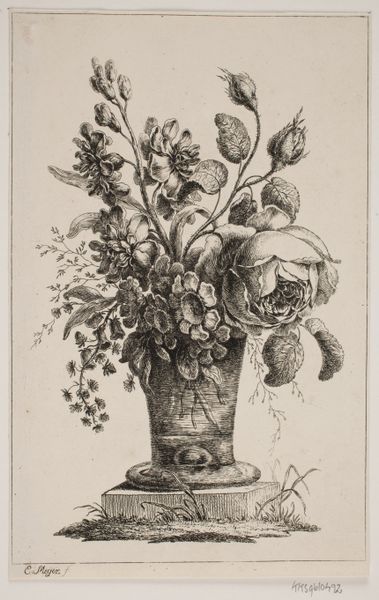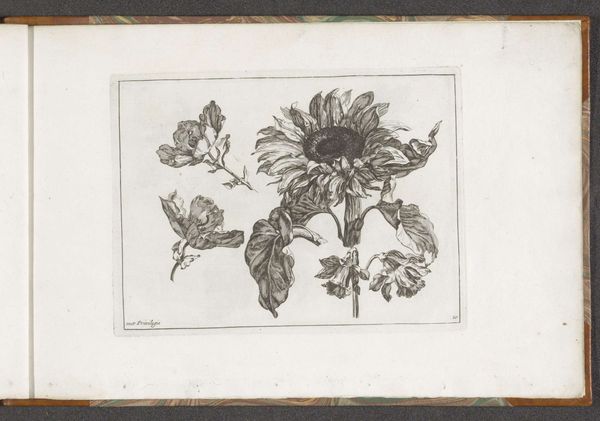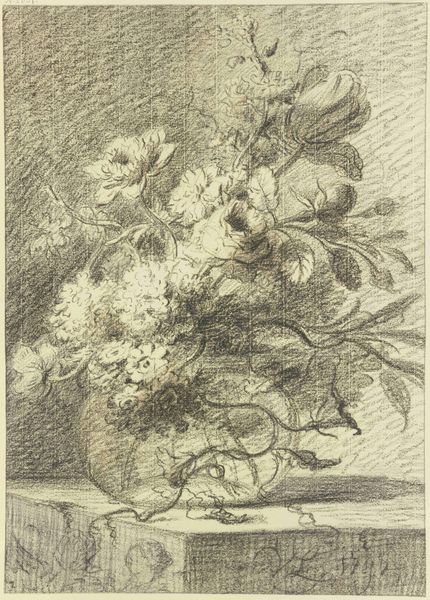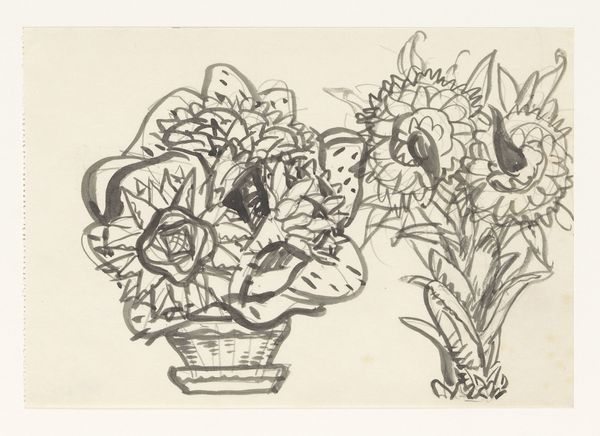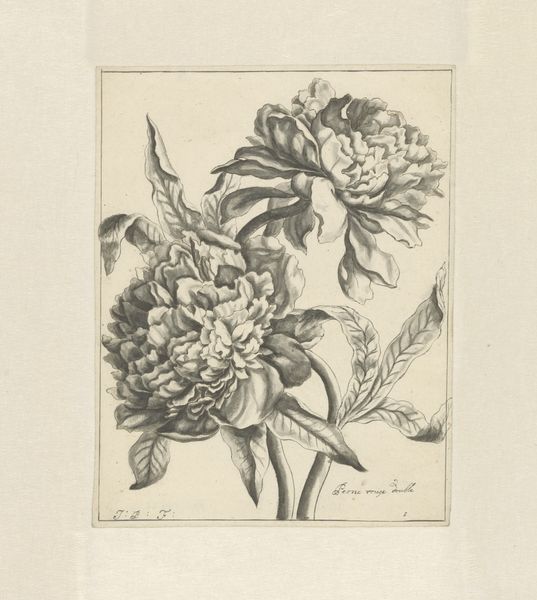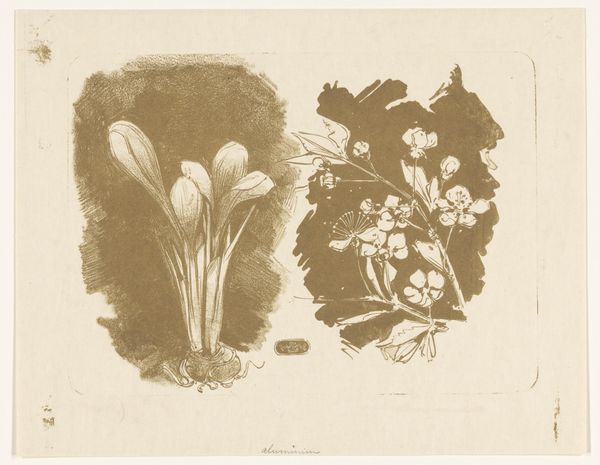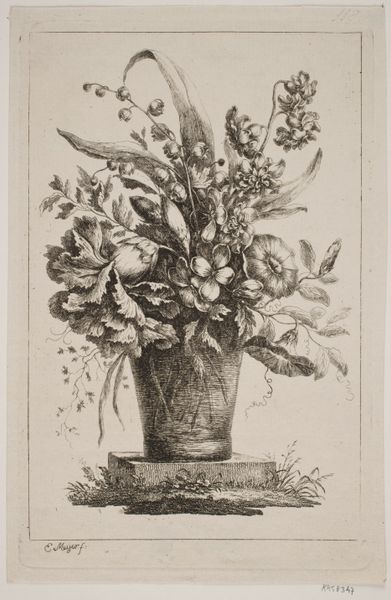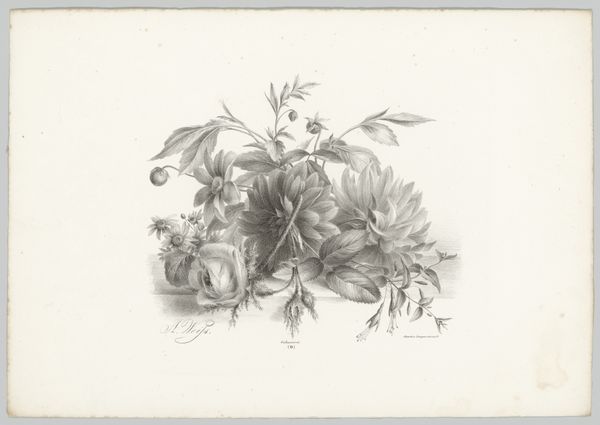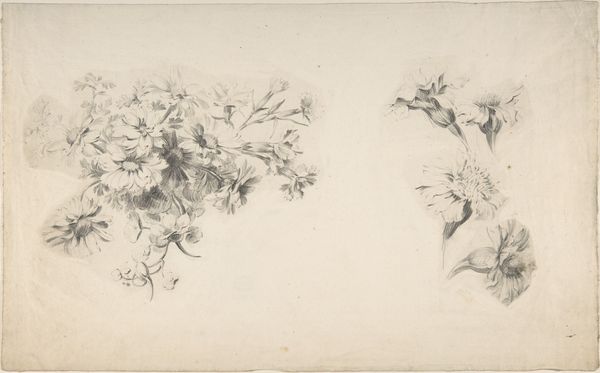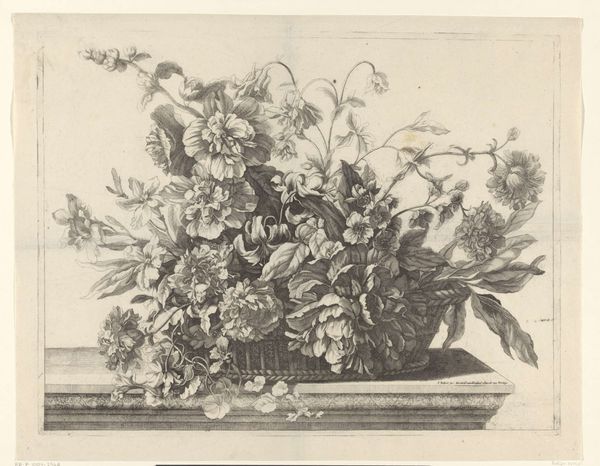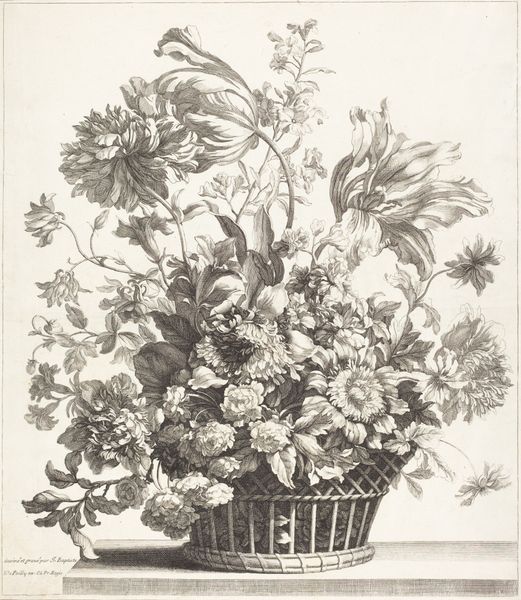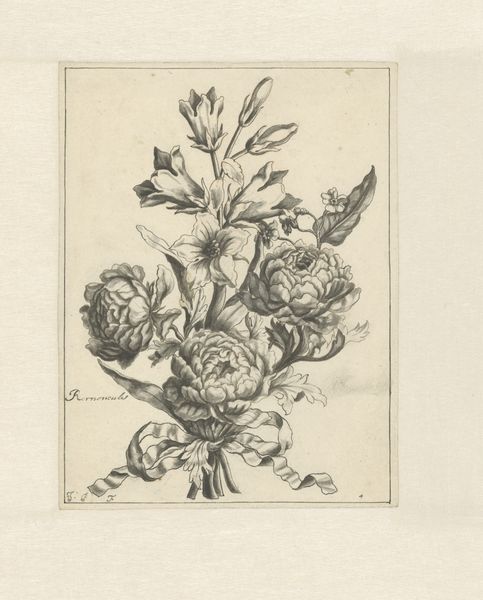
drawing, print, etching, paper, ink
#
drawing
# print
#
etching
#
paper
#
ink
Dimensions: image: 298 x 528 mm primary sheet: 385 x 565 mm secondary support: 403 x 606 mm
Copyright: National Gallery of Art: CC0 1.0
Curator: Welcome. Before us, we have Charles Frederick William Mielatz's "Untitled (Peonies in a Bowl)," dating from 1890. It’s an etching printed in ink on paper. Editor: My immediate feeling is one of delicate stillness. The grayscale gives it a timeless quality, and the composition, with those weighty blooms, seems both balanced and slightly melancholic. Curator: Absolutely. The medium of etching lent itself particularly well to the aesthetics popular in the late 19th century. Think about the rise of print culture, which made art accessible to a broader public. Reproductions like these circulated widely, shaping taste and elevating genres like floral still life to respectable artistic subjects. Editor: I’m drawn to the labor involved, that careful building up of tone with etched lines to create depth and volume in the flowers. You can see the evidence of a repetitive, almost meditative, physical process in the making. What would it mean to the Victorian middle class to own such an item and incorporate into their home lives? Curator: Victorian society had strict codes of domesticity and taste. Art like this would serve not only as decoration but as a marker of social status and cultivation. Still life paintings, including prints, provided acceptable subjects for display in the home and signalled good taste on the part of the collector. Editor: Thinking about the printmaking tradition, I’m wondering how this image was conceived in multiple iterations? Was this luxury accessible only for some? In what kinds of domestic interiors were these items displayed? What sort of value would a printmaker put on his or her work during this era? Curator: Excellent questions, ones that point to the complex interaction of art, commerce, and social identity. Editor: Looking again, I appreciate how Mielatz contrasts the dense blooms with the airy lightness suggested by the butterfly. Curator: A poignant and quiet piece that certainly embodies some of the nuances of its time. Editor: Yes, I find I look at it differently, now thinking about the labor behind this beautiful image.
Comments
No comments
Be the first to comment and join the conversation on the ultimate creative platform.

